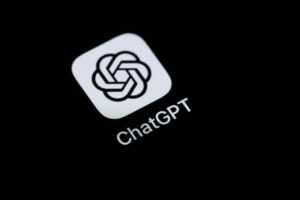Experiencing Failures with Tinder and OpenAI’s Latest Dating Game

Exploring Modern Dating: My Experience with Tinder and OpenAI’s Dating Game
In today’s digital age, dating has transformed significantly, driven by technology and innovative platforms. As we venture into the world of online dating, platforms like Tinder and newer offerings like OpenAI’s dating game present unique experiences. Here, I’ll share my journey through these avenues of modern romance.
Tinder: The Traditional Approach to Online Dating
How Tinder Works
Tinder is a mobile dating application where users create profiles using photos and a short bio. The platform allows users to swipe right to like someone or swipe left to pass. If both parties swipe right, a match is created, opening the door to messaging.
Pros and Cons of Using Tinder
Advantages:
- Wide Reach: Tinder has millions of users worldwide, increasing the chances of finding a match.
- User-Friendly Interface: The app is easy to navigate, making it accessible for all age groups.
- Real-Time Interaction: Instant messaging allows for quick communication once a match is made.
Disadvantages:
- Superficial Approach: The swipe mechanism often emphasizes physical appearances over deeper traits.
- Overwhelm of Choices: With so many options, users may feel overwhelmed, leading to decision fatigue.
- Ghosting: Many users may suddenly stop responding, which can be frustrating for those seeking genuine connections.
OpenAI’s Dating Game: Innovation Meets Romance
What is OpenAI’s Dating Game?
OpenAI’s dating game introduces a unique concept by leveraging artificial intelligence to simulate dating experiences. Unlike traditional dating apps, this interactive platform engages users with AI-driven scenarios, allowing individuals to navigate virtual dating situations.
Features of OpenAI’s Dating Game
Engaging User Experience:
- The game presents various dating scenarios where users can make choices, influencing the outcome of their dating experiences.
Personalized Interactions:
- The AI learns from user inputs, tailoring responses and scenarios to create a more relatable dating experience.
Safe Exploration:
- Participants can explore the complexities of dating through their choices without the risks associated with real-life emotional engagement.
Comparing the Experiences
Both Tinder and OpenAI’s dating game provide distinctive experiences in the dating realm.
Key Differences
- Interaction Style: Tinder focuses on real-time interactions, while OpenAI’s game allows for simulated experiences where users can experiment with decisions before applying them in real life.
- Connection Type: Tinder aims for direct matches and conversations, while OpenAI emphasizes storytelling and scenario-based learning.
- User Engagement: OpenAI’s game offers a reflective approach to dating, potentially leading to deeper insights about oneself and what they seek in a partner.
The Challenges of Modern Dating
Embracing technology in dating is not without its trials. Users face:
- Misleading Profiles: People may present polished versions of themselves, which can lead to disappointment.
- Inconsistent Communication: The ease of swiping can sometimes lead to a lack of commitment in conversations.
- Pressure to Make Quick Decisions: The fast-paced nature of swiping may compel users to rush their choices, detracting from genuineness.
Final Thoughts
With innovative platforms transforming the dating landscape, individuals have more options than ever before. Whether navigating the traditional approach of Tinder or engaging with the interactive features of OpenAI’s dating game, each method offers unique advantages and challenges. As we embrace these technologies, understanding their nuances will enable us to forge meaningful connections in an ever-evolving digital world.





